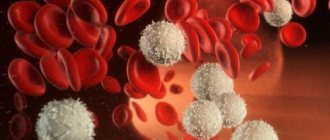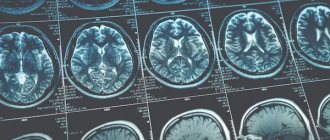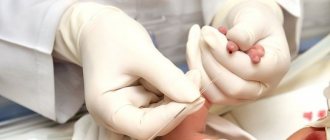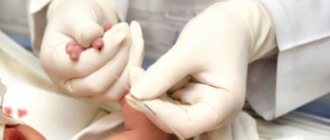What is the norm of leukocytes in urine in women
The norms of leukocytes in a urine test (general analysis) are slightly different in women compared to men.
They are allowed from 0 to 6 cells per field of view when examined under a microscope. The determination is carried out in urine sediment after it has been passed through a centrifuge. The resulting sediment is examined and the number of cells is counted. Today, manual research methods are increasingly being replaced by automated ones. Then the indicators will be indicated in the LEU line. The standard values for automatic detection are identical.
How to donate urine correctly
In order to prevent leukocytes from the genital tract from entering the urine, whether a child or an adult, he needs to prepare for the study. To do this, you need to buy a sterile jar for urine at the pharmacy, and for infants, also a urinal, which is glued to the genitals (they are different for boys and girls).
The day before the test, exclude sorrel, game, chocolate from your diet, and red wine for adults. You also need to consult with your doctor whether it is possible to take Dexamethasone, other hormonal or antibacterial drugs for 2-3 days before this laboratory test.
Immediately after waking up, you need to wash yourself with soap, and wash everything: the inguinal folds, genitals, external anal sphincter with movements directed from front to back. Next, carefully open the lid of the jar and collect the urine there. For a general analysis, you need not an average, but a full portion of urine: at least 5 ml (in infants) and no more than 150 ml in adults.
Author:
Krivega Maria Salavatovna resuscitator
Causes of elevated leukocytes in urine in women
Why a woman’s urine leukocytes may increase, she told us.
She said: “An increase in leukocytes in the urine can be true or false,” says urologist Svetlana Kalinina. – The true cause is associated with inflammatory diseases of the urinary system (kidneys, bladder), and the false cause is a symptom of inflammation in adjacent organs (reproductive system, intestines, etc.). The causes of leukocyturia can be physiological and pathological.
Physiological reasons:
- excessive physical activity;
- long-term use of penicillin antibiotics or non-steroidal anti-inflammatory drugs;
- frequent visits to saunas and baths;
- insufficient hygiene;
- untimely emptying of the bladder.
Pathological reasons:
- inflammation of the urinary system;
- urolithiasis disease;
- diabetes;
- damage to the renal glomeruli (glomerulonephritis);
- systemic diseases;
- venereal and gynecological inflammatory diseases.
In each case, it is necessary to evaluate the level of leukocytes along with other indicators and existing symptoms.
Interpretation of a general urinalysis (UAM) in men
Deviations from the norm of many indicators may be of physiological origin or indicate various pathological processes in the body. It must be remembered that interpretation of the results of a general urine test should be carried out only by the attending physician, since the results of laboratory tests are not the only criterion for making a diagnosis and prescribing appropriate treatment. They should be considered in conjunction with medical history and the results of other possible examinations, including instrumental diagnostic methods.
At the medical office, you can get personal advice from a Doctor Q service doctor on deciphering the results of a urine test during your appointment or by phone.
Color. The normal color is yellow of varying intensity. It may change when you eat certain foods and take certain medications. Whitish, dark brown or other uncharacteristic color indicates the presence of pathology. Urine should be clear.
The smell of ammonia, rotting apples or rotten meat indicates various diseases (for example, cystitis, diabetes, purulent inflammation).
Urine reaction. Normal pH is 5-7 (slightly acidic reaction). Increased acidity is characteristic of feverish conditions, renal failure, diabetes mellitus and other pathologies. An alkaline reaction is observed in chronic infectious diseases.
Density readings are used to assess kidney function. During the day, the specific gravity of urine fluctuates.
There is normally no protein in the urine (proteinuria). Its appearance is a marker of the presence of various diseases (inflammatory infectious diseases of the urinary tract, kidney pathology and others). Protein is also detected in the urine after severe hypothermia or high physical activity.
There should normally be no glucose in the urine. Its detection in a biomaterial sample may indicate the presence of diseases (diabetes mellitus, pancreatic cancer, pancreatitis, etc.), as well as severe stress and consumption of large amounts of carbohydrates.
Bilirubin is detected in hepatitis, cirrhosis, obstructive jaundice and other pathological conditions associated with liver damage.
Urobilinogen in high concentrations indicates liver damage, hemolytic jaundice, and gastrointestinal diseases. An increased amount of ketone bodies indicates a disorder in protein, carbohydrate or lipid metabolism. Nitrites indicate a urinary tract infection.
Flat epithelium is the superficially located skin cells of the external genitalia. Detection of it in urine has no diagnostic value.
Transitional epithelium is found in the kidneys, ureters, bladder and upper urethra. Single cells can be found in urine sediment in healthy people. They are found in large quantities during intoxication, after instrumental interventions on the urinary tract, with jaundice, kidney stones and chronic cystitis.
The renal epithelium in healthy people is not found in sediment microscopy. Found in patients with nephrosis and nephritis.
Red blood cells are normally present in urine in small quantities. A small number of red blood cells can be observed after sports activities, lower back injuries, hypothermia and overheating. The appearance of a large number of red blood cells in the urine can occur in various pathologies (glomerulonephritis, nephrosis, collagenosis, heart disease, sepsis, influenza, infectious mononucleosis, rubella, tonsillitis, dysentery, etc.).
White blood cells can be found in the urine of healthy people. A high content of leukocytes in the urine occurs with pyelocystitis, pyelonephritis, fever of various origins, and genitourinary tract infections.
Cylinders are cylindrical structures that are primarily composed of protein and/or cells. They are usually found in pathologies of the urinary system (glomerulonephritis, pyelonephritis, renal tuberculosis, diabetic nephropathy, chronic kidney disease, renal amyloidosis, fever, scarlet fever, myeloma, osteomyelitis, systemic lupus erythematosus, etc.).
Mucus performs a protective function and is secreted by special cells of the genitourinary system. Normally, its content in urine is insignificant, but during inflammatory processes it can increase.
Salt crystals appear depending on the pH of urine and its other properties, and diet. May indicate mineral metabolism disorders, the presence of stones, or an increased risk of developing urolithiasis.
Bacteria indicate a bacterial urinary tract infection. But they can occur when urine is contaminated with bacteria from the skin.
Table of leukocytes in urine in women
If an increase in leukocytes in the urine is detected, this is called leukocyturia. When more than 200 cells are found in the field of view, it is called pyuria (or pus in the urine). By the type of leukocytes detected, the type of process and its activity can be determined. For this, there is a comparative table of leukocytes in urine:
| Leukocyte type | Possible pathologies |
| Schernberg-Malbin cells are active living neutrophils (segmented), which are increased two to three times | Inflammatory process activity |
| Neutrophil leukocytes | Urinary infections, pyelonephritis, tuberculosis process |
| Mononuclear leukocytes | Glomerulonephritis or interstitial nephritis |
| Lymphocytes | Rheumatoid arthritis or systemic lupus erythematosus |
| Eosinophilic leukocytes | Allergic reactions |
Types of leukocyturia
Depending on the number of white blood cells, three types of leukocyturia are distinguished:
- insignificant (from 7 to 40 units);
- moderate (up to 100 specimens in the field of view);
- pronounced (over 100 units).
A high concentration of white blood cells in the urine may be:
- caused by diseases of the urinary system (true) or arising against the background of an inflammatory process in the genital organs (false);
- infectious or non-infectious origin. In the first case, the presence of infection is confirmed by urine culture or PCR diagnostics. Non-infectious leukocyturia is not associated with bacterial activity; it is caused by an inflammatory process due to allergic cystitis, autoimmune glomerulonephritis, and medications.
Depending on the predominant type of leukocytes, they are distinguished:
- lymphocytic leukocyturia, giving reason to suspect lupus erythematosus or rheumatoid arthritis;
- mononuclear, arising from renal pathologies;
- neutrophilic, which is provoked by tuberculosis, tonsillitis, malaria or pyelonephritis;
- eosinophilic, accompanies allergies.
Diagnostics
If a woman is taking the test, it is advisable to determine leukocytes in the urine outside of menstruation (two days before or two days after), after washing the genitals with warm water and soap.
Leukocytes are determined in a general analysis, along with other indicators. If there is an increase in leukocytes, the analysis is repeated or clarifying studies are prescribed - a urine test according to Nechiporenko or Addis-Kakovsky, a 24-hour urine test, a urine culture.
Additionally, the doctor will prescribe instrumental studies that will identify problems with the urinary system - ultrasound of the kidneys and bladder, radiography, CT, cystoscopy and other procedures to determine the cause of leukocyturia.
Where do leukocytes come from?
The basis of the urinary tract is made up of 2 types of cells: various epithelial and muscle. Their vital activity is supported by capillary blood, bringing oxygen and nutrients. The blood also contains immune cells - leukocytes. They “look around” the urinary tract, checking the “identification marks” displayed on each cell - antigens - with a kind of “list” of such “allowed” molecules.
When white blood cells see the antigens of bacteria, viruses or fungi, as well as the “signs” of cancer cells, they rush to the “compromised” place and begin to destroy foreign agents. After performing their function, they are released into the urine, where they are detected using laboratory tests:
- general (general clinical) analysis - a regular portion of urine taken in the morning. This analysis is the simplest to perform, and it is from it that they usually find out that the white blood cell count is increased (this is called leukocyturia);
- Nechiporenko's test - an average portion of morning urine. It is considered more informative for determining the number of leukocytes, as well as red blood cells and casts in the urine. It better clarifies the number of these cells, which helps in the diagnosis of various inflammatory diseases of the urinary tract;
- Amburger samples. This analysis is performed from 10 ml of urine taken from a container where urine was collected over a 3-hour period;
- Addis-Kakowski test - counting urinary cells in urine collected for 24 hours.
The latter tests are needed to detect hidden leukocyturia (when in a general analysis the leukocytes are normal) or when, after repeated studies, the leukocytes are either elevated or normal. They will help not to miss, but to detect a person’s disease at a stage when an ultrasound will not show anything.
Modern methods of treatment
Leukocytes in the urine themselves are not treated in any way - they are a symptom of certain diseases.
Therefore, all treatment will be aimed at eliminating diseases or conditions manifested by leukocyturia. If these are acute inflammatory processes of the urinary tract caused by bacterial infections, antibiotics are used, which are selected taking into account the pathogen.
For non-infectious diseases, anti-inflammatory drugs, additional fluid intake, diet and medications are prescribed to eliminate the underlying cause of the disease.
In case of surgical pathologies, surgery is recommended, after which additional drugs are prescribed for tissue restoration.
Causes and possible complications
Pyuria is a condition in which the number of white blood cells in the urine shows a very high level
Leukocyturia and pyuria can appear with various diseases of the urinary or reproductive system. To clarify the diagnosis, you need a comprehensive examination, repeated urine analysis, ultrasound, etc.
To determine which organ is inflamed, the patient is asked to urinate 3 glasses in succession.
Depending on which glass the number of leukocytes is increased, we can assume what is affected - the kidneys, prostate and seminal canal (in men) or the bladder and urethra.
The main causes of pyuria:
- Cystitis. Typically, cystitis (inflammation of the bladder) is accompanied by urethritis (inflammation of the urethra). The main symptoms of the disease: frequent urge to urinate, pain and pain during urination, urine has an unpleasant, pungent odor, and may be streaked with blood. Pain in the lower abdomen, nausea, and elevated body temperature may also occur.
- Pyelonephritis. This disease is often bacterial in nature and is accompanied by inflammation of the renal pelvis. The cause of pyelonephritis is the reverse flow of urine into the kidneys due to blockage of the urinary tract or increased pressure in the bladder.
- Prostatitis. In men, leukocyturia is observed in acute prostatitis or in chronic prostatitis in the acute stage. Inflammation of the prostate gland can also be bacterial in nature. Prostatitis is accompanied by pain in the perineum and scrotum, problems with potency and urination.
- Phimosis. This disease occurs in men and is accompanied by a narrowing of the foreskin. In severe cases of this disease, urine is difficult to excrete, first accumulating and then being separated in drops.
- Kidney tuberculosis. This is an infectious disease of the kidney tissue caused by Koch's bacillus. Symptoms of kidney tuberculosis include lumbar pain, difficulty urinating, blood in the urine, and leukocyturia.
Complications due to pyuria can be very different. Inflammation can spread to other organs of the genitourinary system, leading to infertility, kidney failure, pyelonephritis and other serious diseases. Such a symptom cannot be ignored, since any necrotic processes in the kidneys are very dangerous. In women, inflammation can spread to the organs of the uterus and ovaries, which is also dangerous.
Treatment methods
Treatment depends on the cause of leukocyturia and pyuria
It is worth remembering that an increased content of leukocytes in the urine is not a disease, but its consequence. Leukocyturia occurs as a result of an inflammatory process in any organ of the genitourinary system. First you need to undergo an examination and make a diagnosis.
Treatment is usually comprehensive and aimed at eliminating inflammation:
- Antibacterial therapy. Antibiotics form the main part of the treatment of inflammatory diseases of the genitourinary system. This or that drug is determined after bacterial culture of urine, identification of the pathogen and its sensitivity to the drug. The most commonly prescribed drugs are Ciprofloxacin, Erythromycin, Ampicillin, and Amoxicillin. A course of antibiotics is administered for 3-7 days, depending on the severity of the disease. Mandatory treatment with antibiotics requires kidney tuberculosis, pyelonephritis and bacterial cystitis. Antibacterial therapy must be completed to the end, since an interrupted course leads to the development of immunity in bacteria and a relapse of the disease, turning it into a chronic form.
- Immunomodulators. These are drugs that stimulate the immune process, which promotes the body's natural defenses. They affect the body, provoking natural immunity. These drugs are prescribed if leukocyturia is not associated with autoimmune diseases (systemic lupus erythematosus), since in this case the immune system attacks the body, and other drugs that suppress the immune system are needed. Immunomodulators include Immunal, Polyoxidonium, and Echinacea tincture.
- Diuretics. Diuretics are not prescribed for all diseases of the urinary system, but only in cases where urination is difficult and there is a danger of edema. Diuretics include Hydrochlorothiazide, Monitol, Torsemide. These drugs improve the flow of urine and remove fluid from the body.
The duration of treatment depends on the stage and severity of the disease. Typically, treatment is carried out in courses that cannot be interrupted, since infectious diseases are often accompanied by relapses.
It is also important to maintain bed rest, adhere to a diet and drink as much fluid (if not prohibited) as possible (pure water, weak tea, natural compotes and fruit drinks).
Leukocyturia in pregnant women
OAM is a mandatory screening test during pregnancy. In the 1st trimester, the test must be taken once a month, in the second - every 2 weeks, in the third - once a week.
When deciphering, it is necessary to take into account that the overall level of leukocytes in the blood of pregnant women is increased. This is due to an increase in the antigenic load on the woman’s body. Therefore, the concentration of leukocytes in the urine also increases, but not by more than a few units.
A sharp jump in the number of white cells in the TAM of a pregnant woman may indicate the following diseases:
- gestational diabetes (impaired glucose tolerance that develops only during pregnancy);
- leukocytosis (abnormal increase in the number of white blood cells in the blood);
- cystitis;
- pyelonephritis;
- candidiasis;
- gestosis (a complication of the second half of pregnancy, characterized by severe kidney damage);
- atony (pathological decrease or lack of tone) of the bladder.
General information
White blood cells are produced in the bone marrow, after which they are released into the bloodstream, where they “live” for a week. They then die naturally and are excreted in the urine. If the body is healthy, then OAM will not show more than 3-5 specimens in the field of view of the microscope.
Leukocytes provide protection to the body from internal and external pathogenic agents. They actively move, penetrating through the walls of capillaries and the intercellular space, and provide phagocytosis. As a result of this process, white blood cells increase in size and are destroyed. In this case, the body’s reaction manifests itself in the form of hyperthermia and fever, general malaise, pain and suppuration in the area of infection, changes in the color and texture of urine, etc.
If a pathological process develops in the genitourinary system, then leukocytes settle on the mucous membranes and, at the time of urination, are literally washed away by urine, naturally ending up in it.
Any infectious/inflammatory process in the body activates the secretion of leukocytes, and therefore their concentration in the urine increases sharply. However, to obtain reliable results, OAM alone is not enough; diagnosis must be supported by a urine test according to Nechiporenko and a clinical blood test, which will reveal the leukocyte formula in detail.









